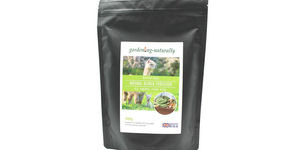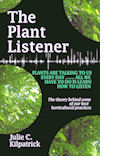Top Tips for Tree Planting
So you want to plant trees? Before you get started, there is a method that works best so that you can have the healthiest tree possible. We will call them Tree Planting Rules.
Be sure the hole you dig isn't too deep or too shallow. Place your tree in the hole as you dig to measure whether it is the right depth. The ground level of the plant in the pot should match up with the ground level after you fill the hole in. You can place the handle of your shovel flat across the hole from one side to the other to measure whether the crown is level with the surrounding soil before filling in the hole.

Once your hole is dug, you can add fertiliser. All plants need fertiliser to thrive, but too much and you will burn the leaves or kill the plant. Follow the package directions on the type of fertiliser you purchase. A good choice is slow release fertiliser, available from garden stores. Over-fertilising can result in growth that is too fast. This growth might not be very strong or well formed. More is not better.
You can use compost or manure to help the soil out around your newly planted tree. If the soil that you currently have is not rich, has clay-like qualities or if it has the consistency of dust or sand, the addition of manure or compost will give the tree a great start in life. Backfill three quarters of the hole with existing dirt, one quarter with compost or composted manure. The composted organic matter also includes lots of nutrients for your tree. If you think the compost is rich enough, you may be able to do without a commercial fertiliser.
When planting fruit and nut trees, give them extra attention. For example, adding manure or compost is essential if you are planting these types of trees. Backfill two thirds of the hole with existing dirt and one third with compost or composted manure for each fruit or nut tree.
Next, water the newly planted tree. There will be some settling after you water, so after this occurs, backfill the remaining soil, and water again. This will eliminate air pockets. Water one gallon (3.7 litres) for every six inches (15 cm) of tree height.

After you have watered, you can now apply mulch over the planting hole. The rule of thumb is to cover the planting hole with 1-3 inches (2.5 cm - 7.6 cm) of shredded hardwood or leaf mulch. Do not put mulch against the trunk or it will rot. Don't over-mulch the tree, either. A few inches are enough to keep water in and most weeds out. Mulch a circle out to the drip line, about the same width as the tree's leaves. A visible patch of mulch also helps remind people not to step or mow or run a string trimmer too close to the tree.
Now you need to water your tree again. After the planting is finished come back in about an hour and water one more time.
Stake the tree if necessary, for about the first year. Make sure that whatever stakes you use are tied loosely to the trunk and do not dig into the bark or tighten around the tree. Remove the stakes once the roots have a chance to become established, after about the first year. Staking protects the tree against blowing over in the wind, and it can also help to remind people moving around the tree not to run into it.
With your newly planted tree don't forget to keep watering it for the first few years as it gets established. Depending on the climate and your area, it will need weekly watering until the roots are established. To form deep roots, water deeply. A long, slow trickle of water will water more deeply than a quick sprinkling. Remember, deep roots help your tree to be resist droughts and winds. Let the ground dry out, at least somewhat, between watering.
Last, is enjoy the tree as it grows over the years with you and your family. Appreciate its shade and beauty and thank yourself for adding another tree to the world. And there you have it, the rules for planting your tree.
Andrew Johnson is the owner of Central Texas Tree Care, a leading tree service provider in Central Texas (Travis County and surrounding areas) offering services such as pruning and removals, cabling and bracing as well as arborist reports, diagnostics, pest management, fertilization and Austin tree service trusts. For more information please visit Central Texas Tree Care











